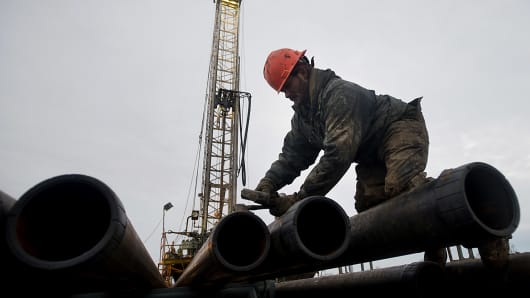If oil prices keep falling, at some point it's not profitable to pull it out of the ground. But we're not there yet, according to an analysis of production costs by an energy consulting firm.
In fact, even if the Brent price index falls another 20 percent from Friday's closing price—to $40 a barrel—just 1.6 percent of the world's oil supply would represent unprofitable production.
Energy consultant Wood Mackenzie analyzed production data from 2,222 oil fields around the world to see just how much further oil prices would have to fall to make them "cash negative"—costing more to operate than the oil is worth. That price can act like a brake on production, according to Wood Mackenzie analyst Robert Plummer.
Read MoreSpillover effect of cheap oil: Bankruptcy shock
"Once the oil price reaches these levels, producers have a sometimes complex decision to continue producing, losing money on every barrel produced, or to halt production, which will reduce supply," he said.






